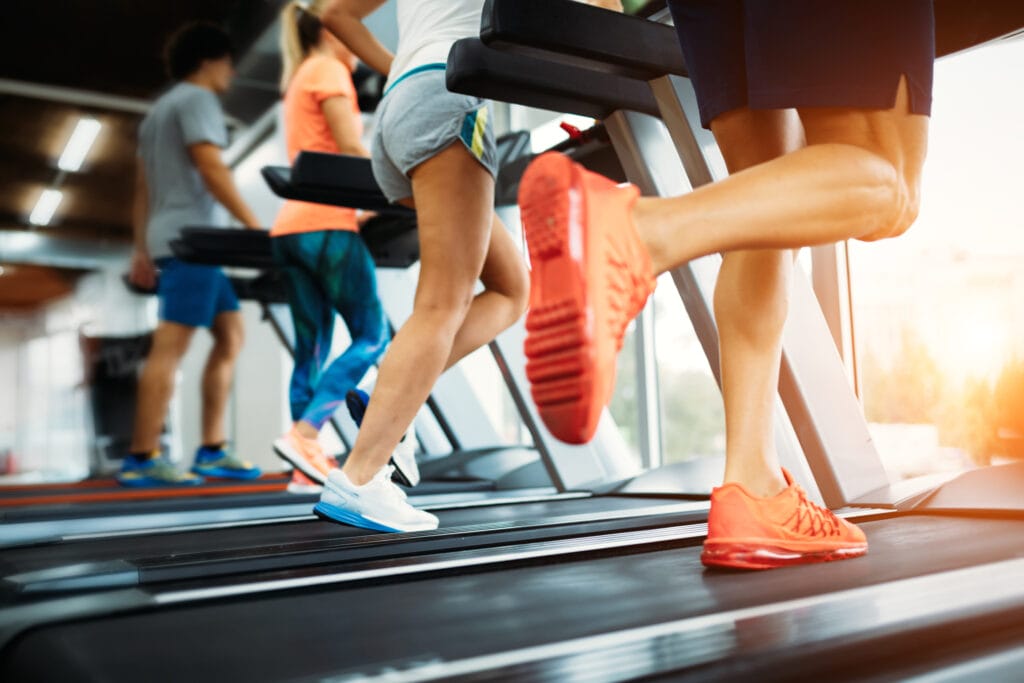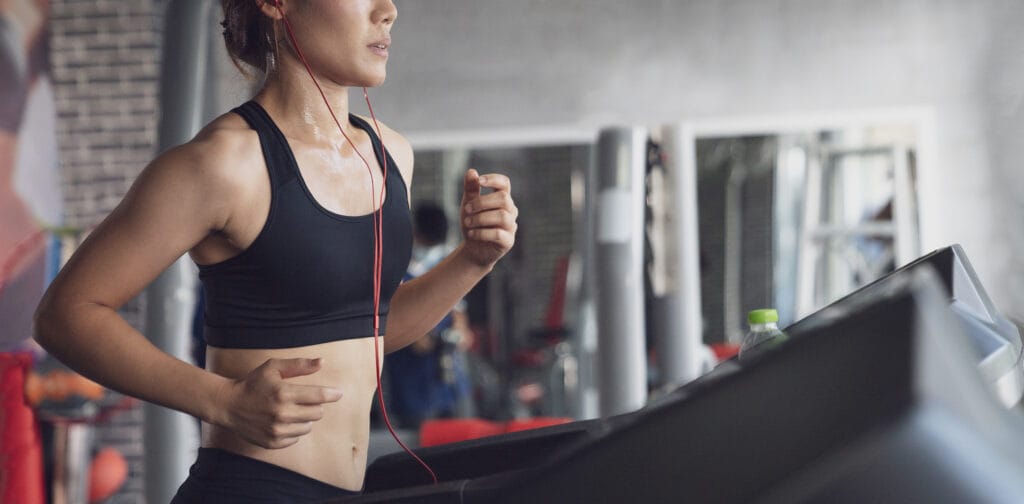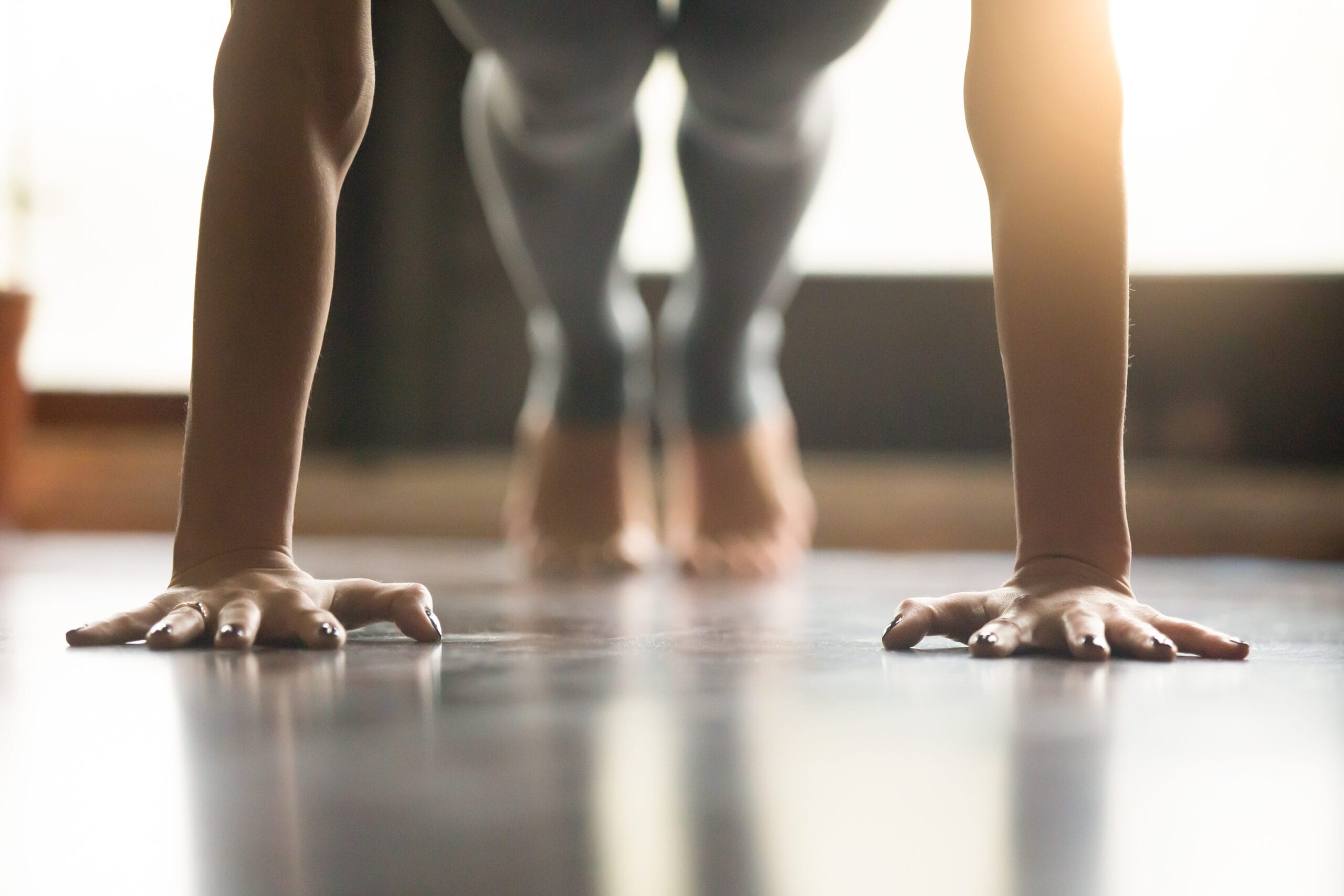
Embarking on the journey of conquering a 5K is a fitness milestone that promises not just physical endurance but a profound sense of accomplishment.
And in the pursuit of this goal, many aspiring runners find themselves drawn to the reliability and convenience that only a treadmill can offer.
While pounding the pavement certainly has its benefits, the controlled environment of a treadmill can be a game-changer in your training strategy.
After all, the weather’s always perfect for a run on a cozy treadmill.
So, whether you’re a novice runner gearing up for your first 5K or a seasoned athlete looking to refine your approach, the treadmill can be a valuable tool when training for a race.
In this comprehensive guide, we’ll take a loot at all the intricacies training for a 5k on a treadmill entails, including practical tips to get the most out of your treadmill.
So lace up those running shoes and get ready to embark on a transformative training experience that will propel you toward 5K success.
Benefits of Training For a 5k On a Treadmill
Training for a 5K on a treadmill offers a range of benefits that can enhance your overall running experience and performance.
These perks include:
Weather Independence
One of the biggest advantages o training indoors is that treadmills allow you to train regardless of weather conditions.
This is especially beneficial during extreme temperatures, rain, or snow, ensuring consistent training without disruptions.
Pace Control
Treadmills provide precise control over your pace.
This is valuable for beginner runners learning to maintain a steady speed and for experienced runners fine-tuning their pacing strategies for optimal performance.
On a treadmill, you know exactly how fast you’re going and it’s easy to keep track of distances, laps, or whatever other distance measurement you might want to track as you train.
Safety and Convenience
Treadmills also offer a controlled and safe environment for running.
There’s no need to worry about traffic, uneven surfaces, or obstacles, making it an ideal option for those who prioritize safety or have limited access to safe outdoor running spaces.
This is especially true for city dwellers who don’t enjoy dodging pedestrians, dogs, bikes, and whatever other obstacles you’ll find in the city.
Incline Simulation
The ability to adjust incline levels on a treadmill allows you to simulate uphill running (and even downhill running on some models).
This is valuable for building strength, improving endurance, and preparing for the varied terrain typically encountered in outdoor 5K courses.
Interval Training Ease
Treadmills make it convenient to engage in structured interval training.
You can easily program speed variations and incline changes, facilitating effective interval workouts that mimic the intensity fluctuations of a 5K race.
Mental Focus and Distraction
The controlled environment of a treadmill may even help you maintain focus during your run.
Additionally, features like built-in entertainment systems or the ability to watch TV can provide distraction, making longer runs more mentally manageable.
Of course, you won’t be able to watch Netflix during your race, so you might want to train without these distractions to make sure you can handle race day.
Accessibility
For those without easy access to outdoor running spaces, a treadmill provides a readily available option for consistent training.
Even if you don’t own your own treadmill, going to a commercial or apartment gym can often be easier than dealing with trying to find a safe route outdoors.
This accessibility can be especially beneficial for individuals living in urban areas or areas with limited outdoor running options.
Reduced Impact on Joints
Finally, treadmills offer a more forgiving surface compared to concrete or asphalt.
With thick belts and cushiony shock-absorbing systems, treadmills tend to be quite a bit lower impact than running outside.
This can add significantly to comfort, making it a suitable option for individuals who may be prone to joint discomfort or injuries.
Tips For Training For A 5k on a Treadmill
Training for a 5K on a treadmill offers a controlled and efficient approach to building the strength and endurance necessary for race day success.
But in order to be successful, you have to have a game plan.
Check out the following tips to make sure you stay on the right track.
1. Assess Your Fitness Level
First things first, you have to be realistic about where you are.
Begin by evaluating your current fitness level.
This includes understanding your baseline running ability, endurance, and any specific areas you’d like to improve.
2. Set Clear Goals
Define your goals for the 5K race.
Are you trying to beat your PR or simply trying to complete your first 5k without stopping?
Whether it’s achieving a specific time, building endurance, or simply completing the race, having clear objectives will guide your treadmill training plan.
3. Establish a Training Schedule
Plan your training schedule, incorporating both outdoor and treadmill runs.
Balance your workouts to include a mix of steady-state runs, interval training, and rest days for recovery.
Your training schedule and specific workouts will vary depending on your skill level – beginners and experienced runners will not train the same way for a race.
If you’re looking for specific week-to-week workouts when preparing for a 5k, check out this great guide by VeryWellFit for more info.
4. Use Treadmill for Specific Workouts
Regardless of what your customized training schedule looks like, you’ll want to use your treadmill to incorporate different types of workouts.
Doing this will allow you to get the most benefit and better prepare you for the race at hand.
Leverage the treadmill for targeted workouts that include:
-
- Interval Training: Set intervals for faster sprints followed by periods of recovery. This’ll come in especially handy when trying to sprint it out for the finish line.
- Hill Workouts: Adjust the incline to simulate uphill running and build strength. You could also try running longer distances with a low incline of 2-3% to simulate outdoor running.
- Pace Control: Practice maintaining a steady pace for extended periods. This is great for improving overall endurance.
5. Simulate Race Conditions
Mimic the conditions of the 5K race on the treadmill by adjusting the speed and incline to match the course profile, preparing your body for the specific challenges you’ll face on race day.
This’ll be easier if you’re familiar with the race route, but if not, set the incline to a resting setting of 2-3% and see how fast you can run a 5k.
6. Gradual Progression
Progress gradually to avoid overtraining and reduce the risk of injuries.
Increase the intensity, duration, or frequency of your workouts in a controlled manner, allowing your body to adapt.
If you’re new to running, start slow and give plenty of rest between workouts.
You also may need to build yourself up to being able to tolerate the full 5k distance all at once.
The amount of time you have before the race will largely dictate your running schedule as well.
When in doubt, rest more – that’s the therapist in me speaking, but it’s better to be pain free than sorry.
7. Monitor and Adjust
Regularly monitor your progress.
Use metrics like distance, pace, and heart rate to track improvements and adjust your training plan based on your evolving fitness levels and any feedback your body gives ya during training.
You want to make sure you’re challenging yourself and making progress toward goals so if you aren’t happy with your progression, you may have to switch up your routine.
8. Taper Before Race Day
In the week leading up to the race, reduce the intensity and volume of your workouts.
Allow your body to rest and recover, ensuring you’re in peak condition on race day.
It’s not a bad idea to spend more time stretching and foam rolling the few days before the race as well.
It’s all about making sure you body is in prime condition when it’s time to tackle your 5k.
9. Practice Race Day Routine
During the final weeks of training, try to simulate race day conditions.
Practice your pre-race routine, including nutrition, hydration, and warm-up, to identify and address any potential challenges.
It’s also a good idea to try and get some outdoor running in as well to make sure you’re comfortable with the feel because running outside is different than running on a treadmill.
Choosing The Right Treadmill
Believe it or not, all treadmills aren’t created equal when it comes to training for a race.
Choosing the right treadmill for 5K training involves considering various factors to ensure it can keep up with your needs and handle the stresses of doing so.
If you’re training at a commercial gym, you can rest assured those treadmills can handle the challenge.
But if you’re looking to purchase a new home treadmill, I encourage you to consider the following:
If you’re interested in more detail, check out my full treadmill guide for a complete buyer’s guide.
Motor Power
Look for a treadmill with a powerful motor because stronger motors will provide smoother operation when running for prolonged periods.
Aim for a treadmill that has at least a 3 continuous horsepower (CHP) motor to ensure exceptional running performance.
This ensures smooth and consistent performance during your 5K training sessions.
Running Surface Size
The running surface size refers to the dimensions of the belt and it’s another really important spec to look for.
Long-story-short, larger is always better because it’ll make for a more comfortable running experience.
Opting for a treadmill with a spacious running surface will provide ample room for your strides.
A running deck that is at least 55 inches long and 20 inches wide should be suitable for most runners.
Incline and Decline Options
Pretty much all home treadmills come with incline features these days, but some come with decline features too, giving you the option to train downhill.
Personally, I think incline training is a lot more useful than downhill training, but to each their own.
Some treadmills come with more incline range than others, so think about your preferences.
Most quality treadmills come with inclines in the 10 – 15% range.
Having ample incline settings will come in handy when it comes to recreating real world conditions.
Assembled Weights/Weight Capacities
I think it’s a good idea to look for the treadmill’s assembled weight before making any decisions too.
Seeing a heavier treadmill is a good sign it’ll feel more stable during use and be more able to handle the stress that running regularly creates.
Treadmills that weigh over 250 lb will offer heavy-duty feels that will come in handy when training for your 5k.
And of course you need to make sure any treadmill you’re considering comes with a weight limit high enough to safely accommodate any users.
Most respectable treadmills come with weight limits of 300 lb+.
Warranty
You should consider the warranty for any treadmill you’re considering because this is the machine’s insurance policy.
And seeing a longer warranty is always better of course.
Quality home treadmills will come with generous warranties:
- 10+ year frame guarantees
- 3-5 year parts guarantees
- 1 year labor warranties
If a prospective treadmill comes with a lackluster warranty, it could be a sign that the treadmill isn’t built to last.
By carefully considering these factors, you can select a treadmill that complements your 5K training goals and enhances your overall running experience.
Sample Treadmill Training Program
Here’s an example of what a treadmill training program could look like, but feel free to adjust based on your skill level and experience.
This program is geared more with a beginner in mind and may be too easy for more experienced runners.
Anyway…
Weeks 1-2: Building Endurance
Day 1:
- Warm-up: 5 minutes brisk walk
- Run: 1 minute at a comfortable pace, followed by 2 minutes brisk walk (repeat for 20 minutes)
- Cool Down: 5 minutes brisk walk
Day 2: Rest or Light Activity
Day 3:
- Warm-up: 5 minutes brisk walk
- Run: 2 minutes at a moderate pace, followed by 2 minutes brisk walk (repeat for 25 minutes)
- Cool Down: 5 minutes brisk walk
Day 4: Rest or Light Activity
Day 5: Long Steady-State Run
- Warm-up: 10 minutes brisk walk
- Run at a steady pace for 30 minutes
- Cool Down: 10 minutes brisk walk
Day 6: Rest or Light Activity
Day 7: Cross-Training (e.g., cycling, swimming)
Weeks 3-4: Introducing Intervals
Day 1:
- Warm-up: 5 minutes brisk walk
- Intervals: 30 seconds sprint, followed by 1.5 minutes brisk walk/jog (repeat for 20 minutes)
- Cool Down: 5 minutes brisk walk
Day 2: Rest or Light Activity
Day 3:
- Warm-up: 5 minutes brisk walk
- Intervals: 1 minute moderate run, followed by 1 minute brisk walk (repeat for 25 minutes)
- Cool Down: 5 minutes brisk walk
Day 4: Rest or Light Activity
Day 5: Long Steady-State Run
- Warm-up: 10 minutes brisk walk
- Run at a steady pace for 35 minutes
- Cool Down: 10 minutes brisk walk
Day 6: Rest or Light Activity
Day 7: Cross-Training
Weeks 5-6: Increasing Intensity
Day 1:
- Warm-up: 5 minutes brisk walk
- Intervals: 45 seconds sprint, followed by 1 minute brisk walk (repeat for 25 minutes)
- Cool Down: 5 minutes brisk walk
Day 2: Rest or Light Activity
Day 3:
- Warm-up: 5 minutes brisk walk
- Intervals: 1.5 minutes moderate run, followed by 1 minute brisk walk (repeat for 30 minutes)
- Cool Down: 5 minutes brisk walk
Day 4: Rest or Light Activity
Day 5: Long Steady-State Run
- Warm-up: 10 minutes brisk walk
- Run at a steady pace for 40 minutes
- Cool Down: 10 minutes brisk walk
Day 6: Rest or Light Activity
Day 7: Cross-Training
Weeks 7-8: Final Preparations
Day 1:
- Warm-up: 5 minutes brisk walk
- Intervals: 1 minute sprint, followed by 1 minute brisk walk (repeat for 30 minutes)
- Cool Down: 5 minutes brisk walk
Day 2: Rest or Light Activity
Day 3:
- Warm-up: 5 minutes brisk walk
- Run at a comfortable pace for 30 minutes
- Cool Down: 5 minutes brisk walk
Day 4: Rest or Light Activity
Day 5: Final Long Steady-State Run
- Warm-up: 10 minutes brisk walk
- Run at a steady pace for 30 minutes
- Cool Down: 10 minutes brisk walk
Day 6: Rest
Day 7: Race Day!
Adjust the intensity and duration based on your fitness level and progress.
Just remember it’s essential to include rest days for recovery and listen to your body.
And please never try to force your way through pain! (always consult with a fitness professional or healthcare provider before starting a new training program and never do anything you’re not comfortable with).
Final Thoughts
A quality treadmill can be a great tool when training for a 5k.
By integrating treadmill training strategically into your overall 5K race preparation, you can enhance your endurance, improve your pacing, and build the mental and physical resilience needed for a successful race day experience.
And whether you’re a beginner or a seasoned runner, utilizing a treadmill can add greatly to your 5k prep.
Personally, I think the perks treadmills offer greatly outweigh their downsides, but it’s still worth noting that treadmills aren’t perfect.
For one thing, unlike running outside, treadmills offer flat, consistent terrain that doesn’t change.
Sure, you can adjust the incline, but there aren’t any cracks, uneven spots, curbs, sidewalks, or any other real world obstacles to navigate.
Not to mention weather conditions, like wind or changing temperatures, that aren’t any issue when training inside.
More importantly though, only training on a treadmill may actually change your running form – the moving belt assists in leg turnover, potentially affecting your stride and foot placement when compared to running outdoors.
It’s essential to ensure that your treadmill training doesn’t lead to form discrepancies that could cause issues on race day.
Overall, it’s likely best to combine treadmill training with outdoors training to maximize your efforts when preparing for a 5k.
Anyway you look at it though, a treadmill can certainly be a useful tool when it comes to preparing for a race.
Happy running!




